WXY architecture + urban design and heneghan peng architects co-led Storm King Art Center's first major capital project, transforming the arrival experience, expanding exhibition space, and creating a facility that enables the care and fabrication of large-scale artworks. Responding to the Art Center's growth in recent years, the design reinforces its role as a leader for monumental art in nature and a cultural platform.
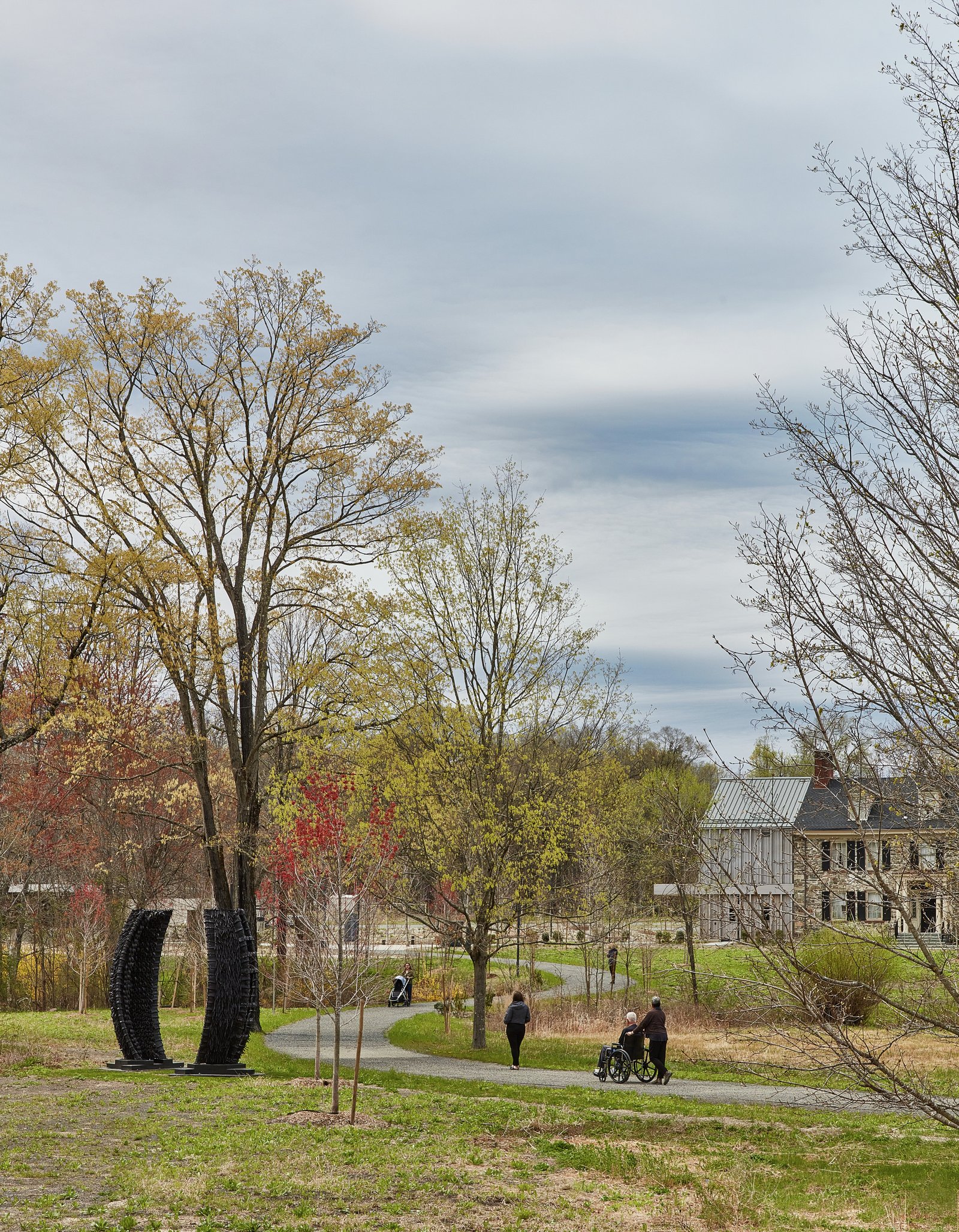
An entrance path connects the Outdoor Lobby and visitor pavilions to Storm King’s grounds. Artwork: Chakaia Booker, A Moment in Time, 2004. Photo credit: Richard Barnes
A rethought arrival sequence gathers all visitors, whether by car, bus, or rideshare, in a newly designed "Outdoor Lobby," a threshold that transitions between the outside world and the museum. Consolidating arrival eliminates vehicles within the Art Center and reclaims five acres of former parking lots. Collectively called the Welcome Pavilions, carefully sited structures support the new entry experience with ticketing, restrooms, and a space for group orientation.
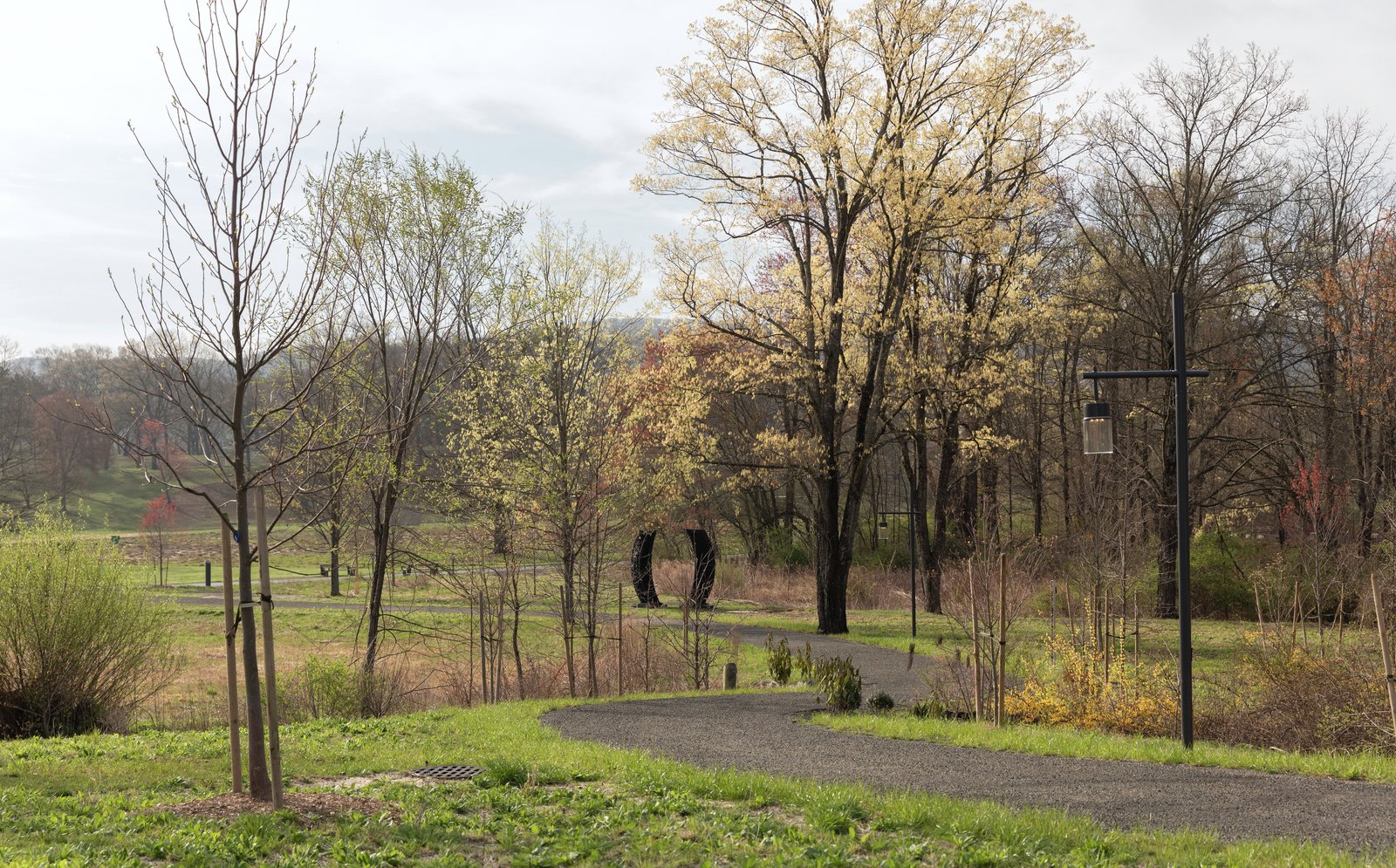
An early spring view of the native plantings along the entrance path. Artwork: Chakaia Booker, A Moment in Time, 2004. Photo credit: Nicholas Venezia
Visitors proceed along a single serpentine walkway, calibrated to reveal site landmarks gradually. The curves frame key views, including Alexander Calder’s The Arch against the North Woods, the Museum Building foregrounded by the Meadows, and the iconic Maple Allée leading to the hilltop. The path’s elevation changes, moving from high to low ground, accessibly negotiating the steep topography from the historical Scandrett house to the Art Center while inviting the sense of discovery.
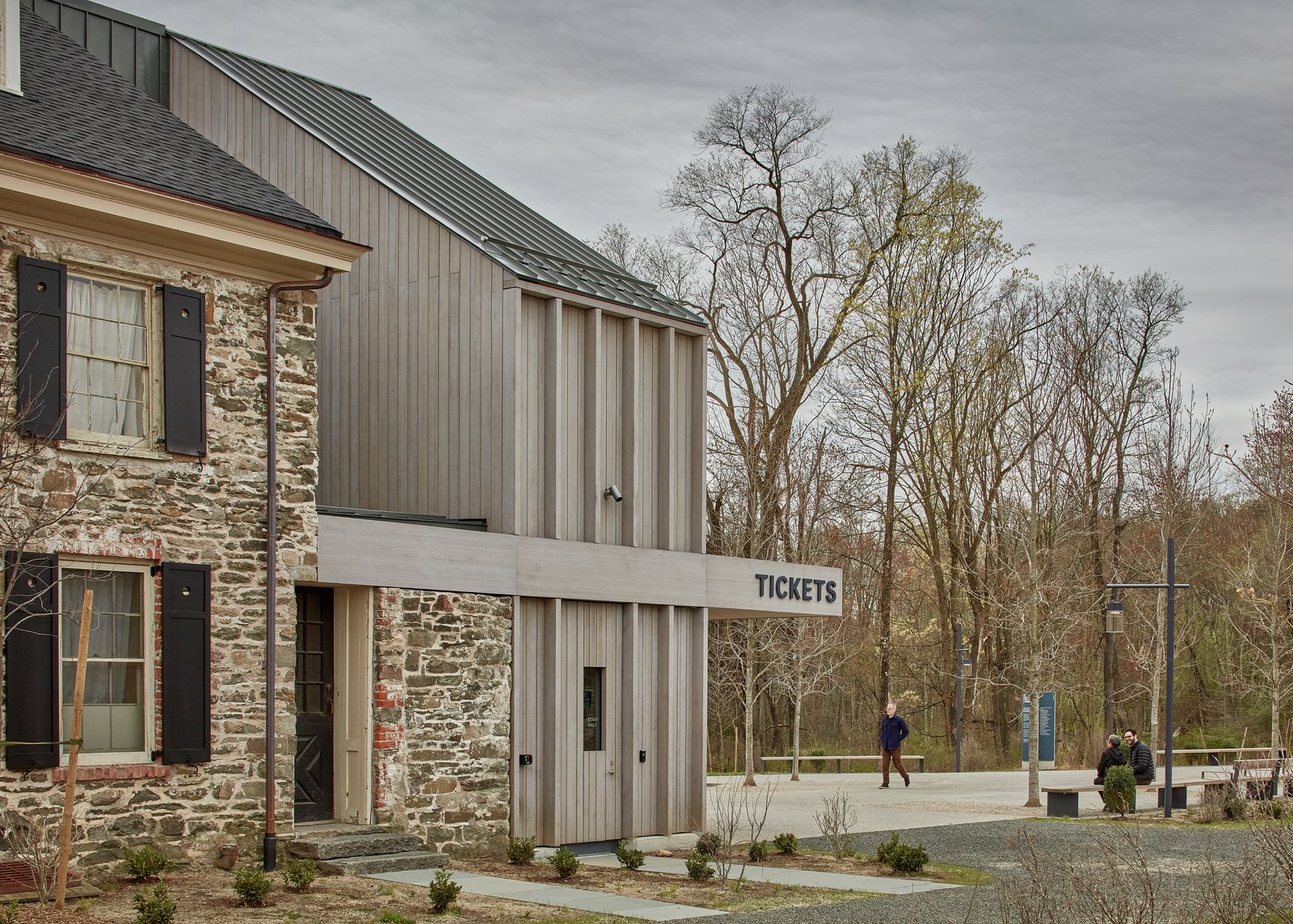
The Ticket & Information Pavilion and Outdoor Lobby in Storm King’s new visitor entrance. Photo credit: Richard Barnes
The design creates a dialogue between built and open space, keeping art and nature at the center of the Storm King experience. Tucking buildings into the tree line ensures the structures integrate seamlessly with the environment rather than competing with it. The Welcome Pavilions share a unified material language of durable, thermally modified wood cladding designed to gray gracefully over time and concrete embedded with native stone aggregate, honed to various textures in response to each use. Dark cladding and careful siting allow the Conservation, Fabrication, and Maintenance facility to recede into the landscape, keeping it out of view from visitors.
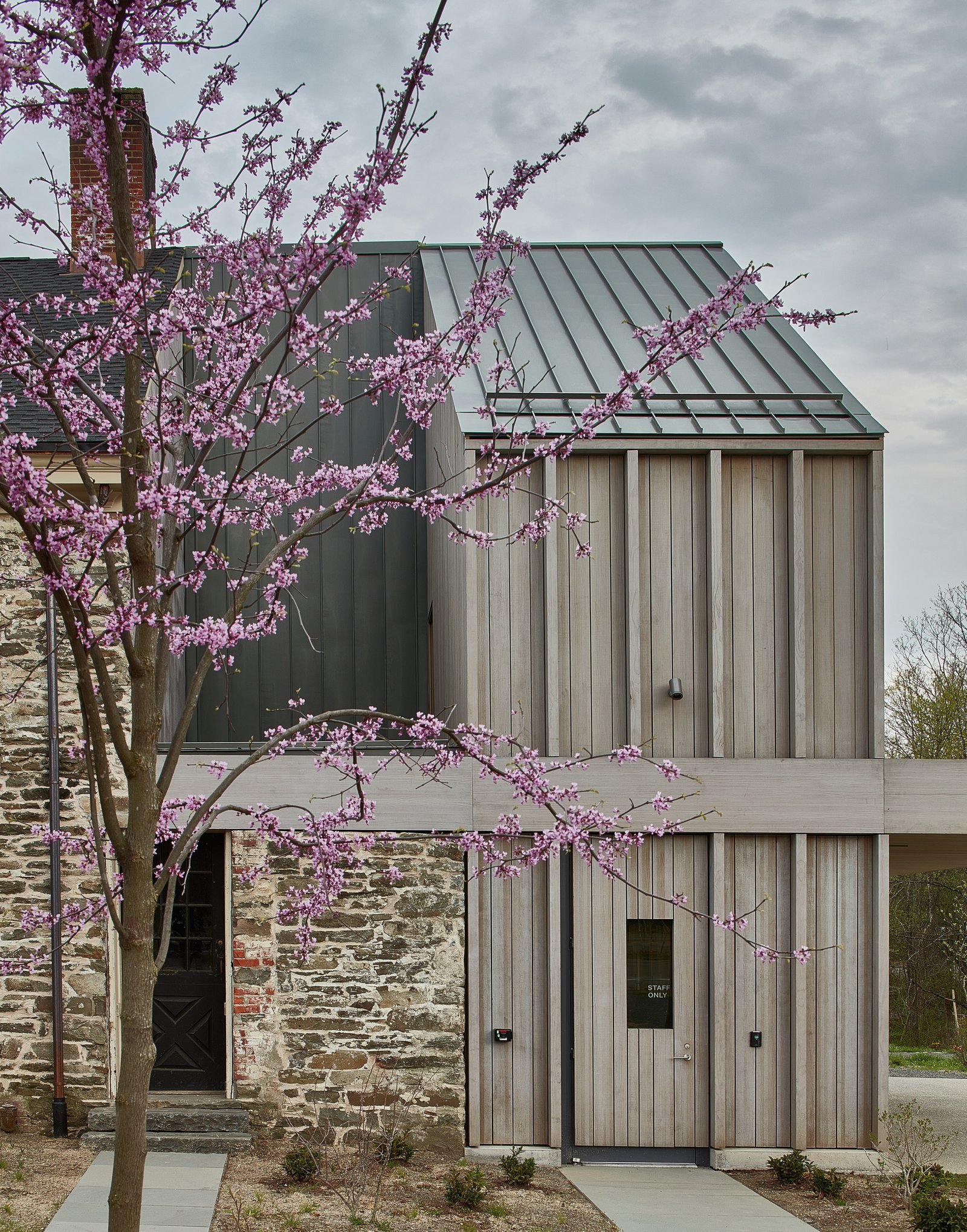
Detail view of the Ticket & Information Pavilion, adjacent to the historic Scandrett House. Photo credit: Richard Barnes
The newly built Conservation, Fabrication, and Maintenance facility, the first of its kind at Storm King, supports large-scale art conservation, material experimentation, ecological research, and in-house fabrication. More than a workspace, the facility bolsters Storm King’s leadership in art and landscape conservation by expanding the capabilities able to be performed on site, reducing the amount of outsourced work. The building is designed to optimize energy efficiency by allowing occupants to harness passive ventilation and natural lighting, retaining as much treated air as possible through mechanical energy recovery and a high insulation enclosure, and minimizing temperature setpoints as staff frequently move between indoors and outdoors.
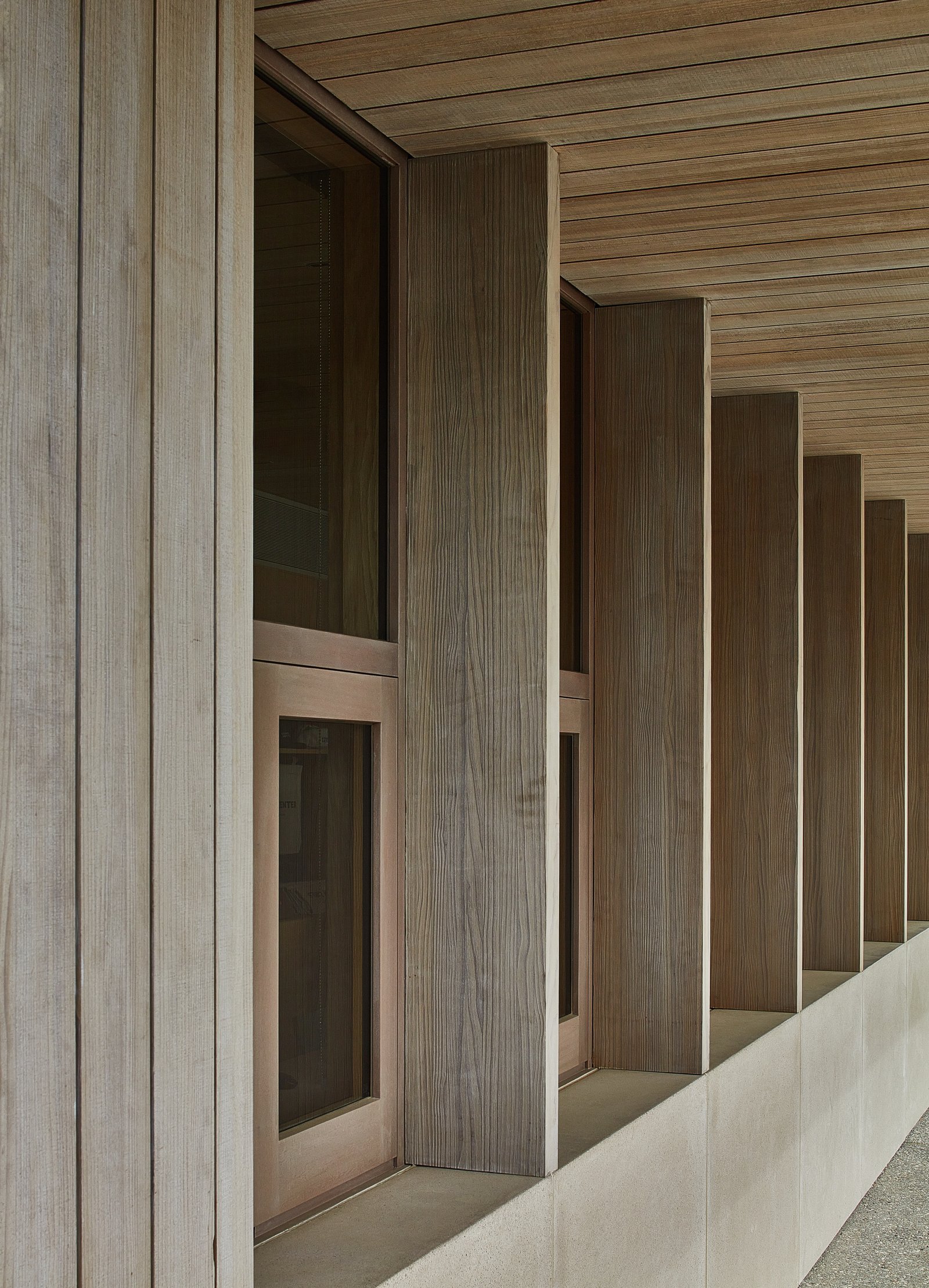
Detail view of the Ticket & Information Pavilion. Photo credit: Richard Barnes
In close collaboration with Reed Hilderbrand and Gustafson Porter + Bowman as landscape architects, the project seamlessly blurs the boundary between architecture and landscape. Removing the former North Parking allowed for the restoration of a natural stream, replacing asphalt with flowing water, flowering plants, and wildlife habitats. The design also reclaims the former South Parking area as Tippet’s Field, a new outdoor exhibition space for art in the heart of the Storm King. More than 650 trees have been planted, reinforcing biodiversity, replacing invasive species with native alternatives, and providing a living backdrop for the art they surround.
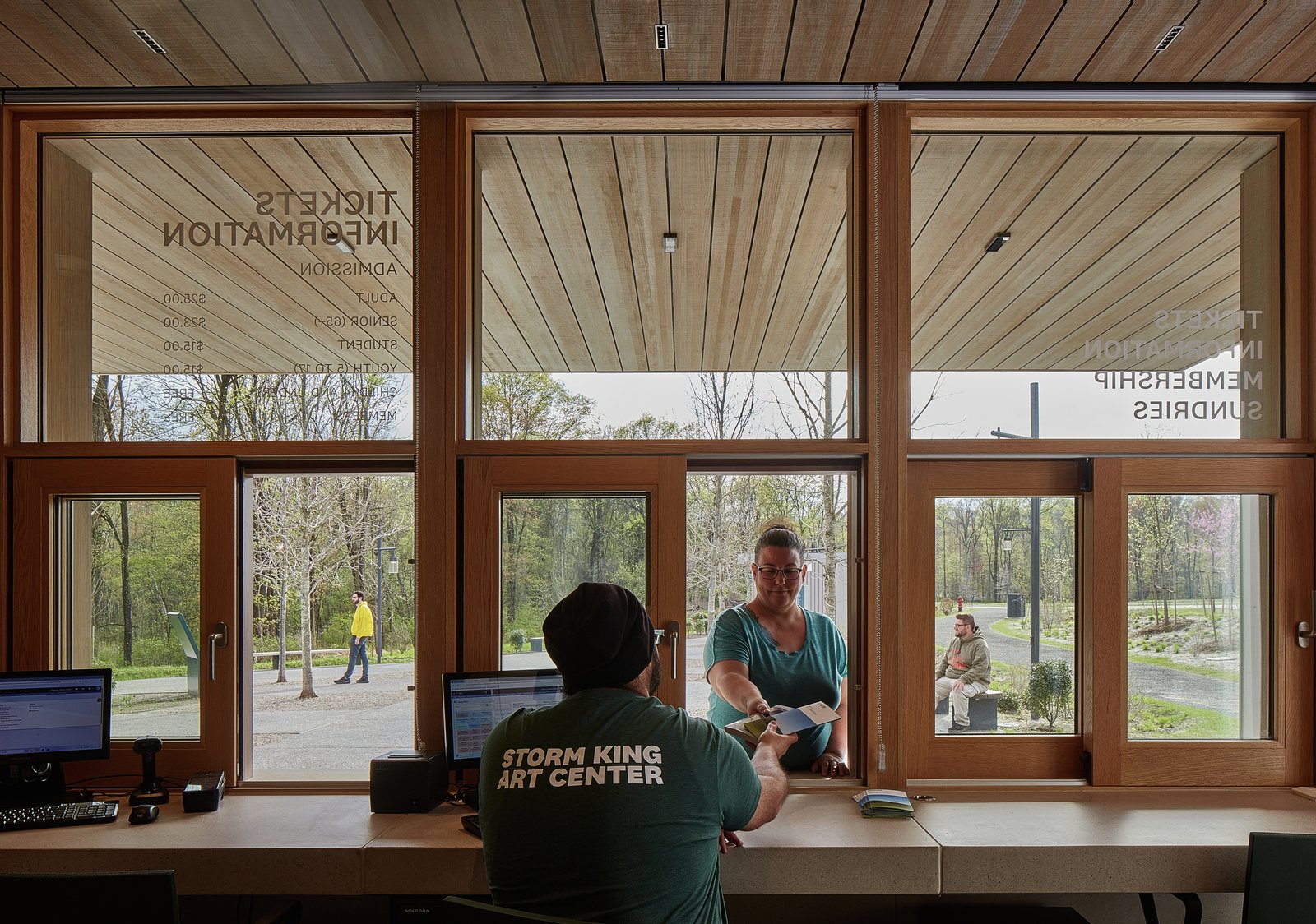
Interior view of the Ticket & Information Pavilion counter, overlooking the Outdoor Lobby. Photo credit: Richard Barnes
Sustainability is integral to every element of the design, centered around an essential principle of building only what’s necessary. By radically reducing the built footprint of the new construction, the project not only uses less materials upfront but also drastically reduces energy consumption in perpetuity. Exemplifying this ethos, the Ticketing Addition is less than 500 square feet of interior area, and the Restroom Pavilion reduces enclosed volume by pushing the shared handwashing area outdoors, using wooden shutters to adapt to the weather and seasons.
“This ambitious capital project enriches the absolute best things about Storm King while helping chart our path to a more sustainable future. It allows us to advance all areas of our work and mission; to support our growing community of visitors, artists, and staff; and to preserve our extraordinary site and collection for future generations.
”— John P. Stern, president, Storm King
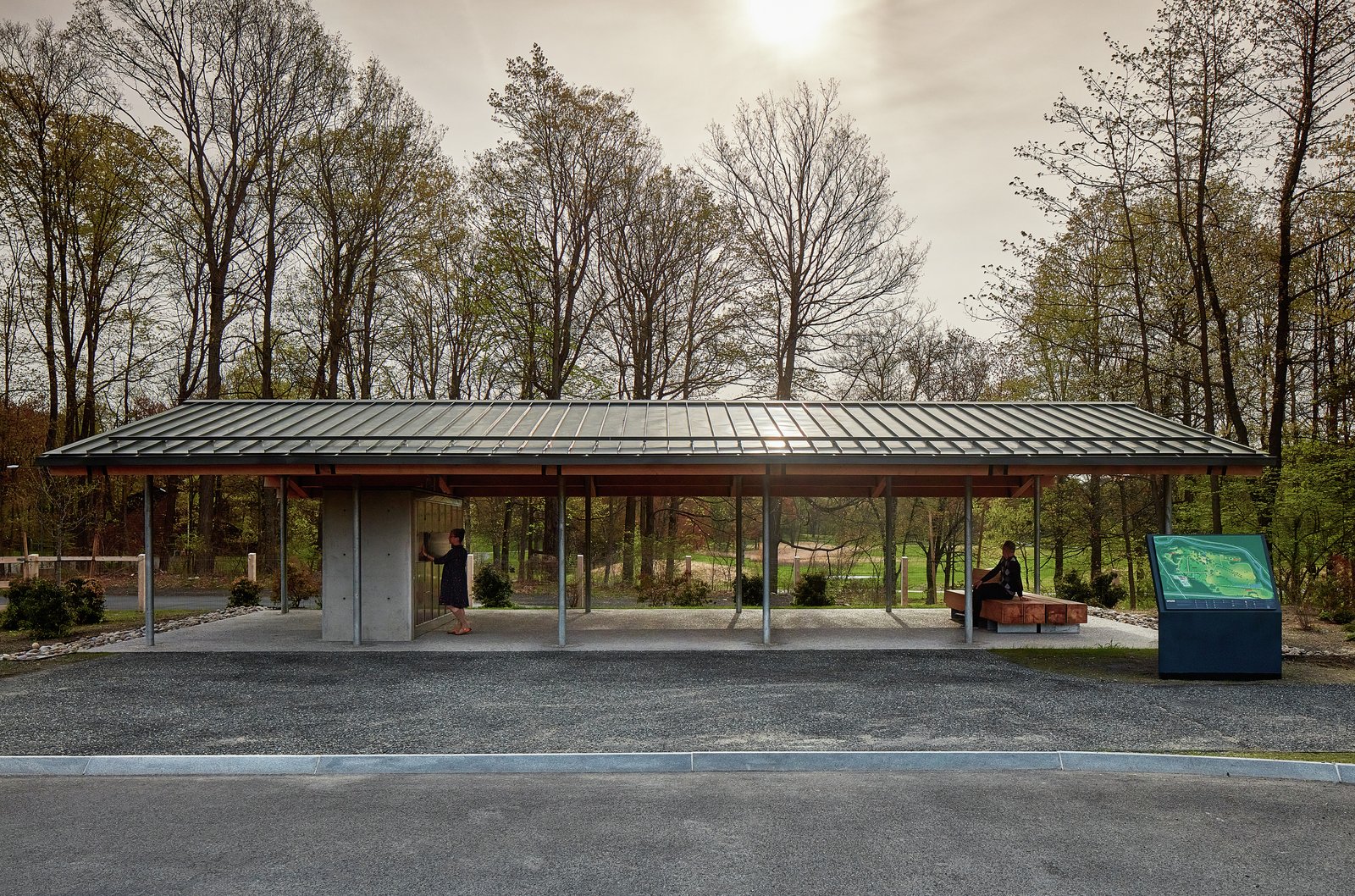
The Group Pavilion in Storm King’s new visitor entrance. Photo credit: Richard Barnes
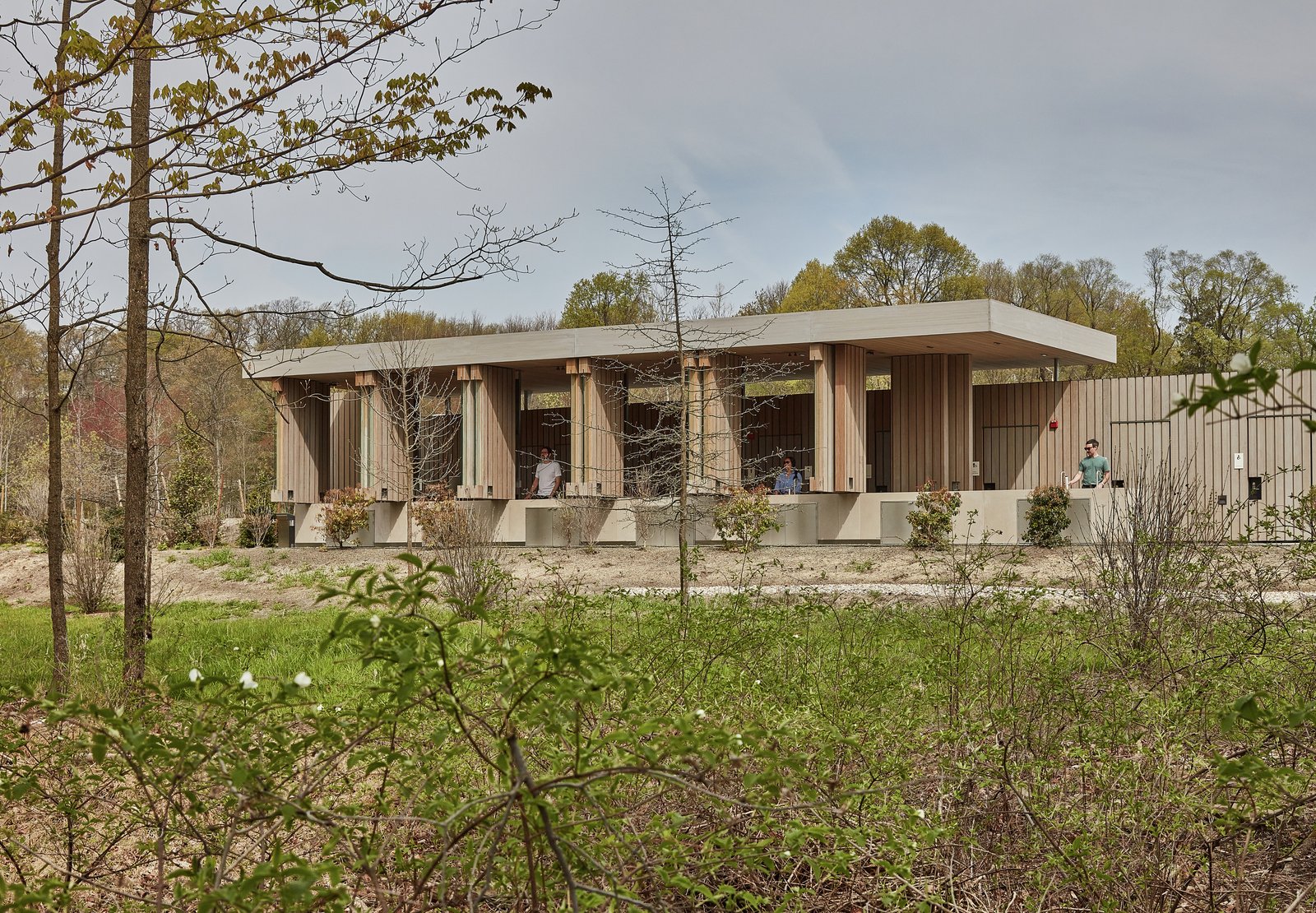
The Restroom Pavilion in Storm King’s new visitor entrance. Photo credit: Richard Barnes
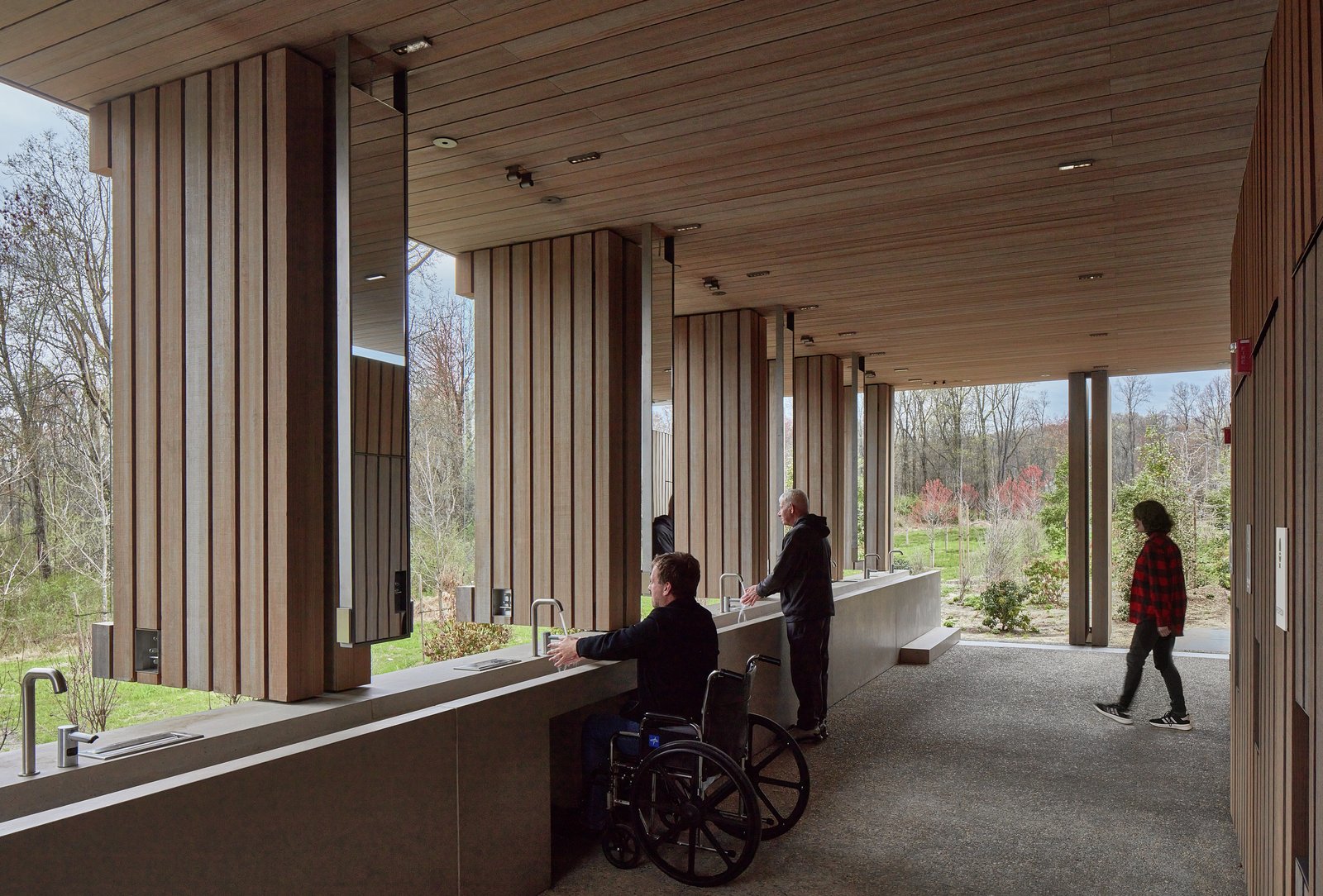
Restroom Pavilion interior, including the open-air handwashing basin and surrounding landscape. Photo credit: Richard Barnes
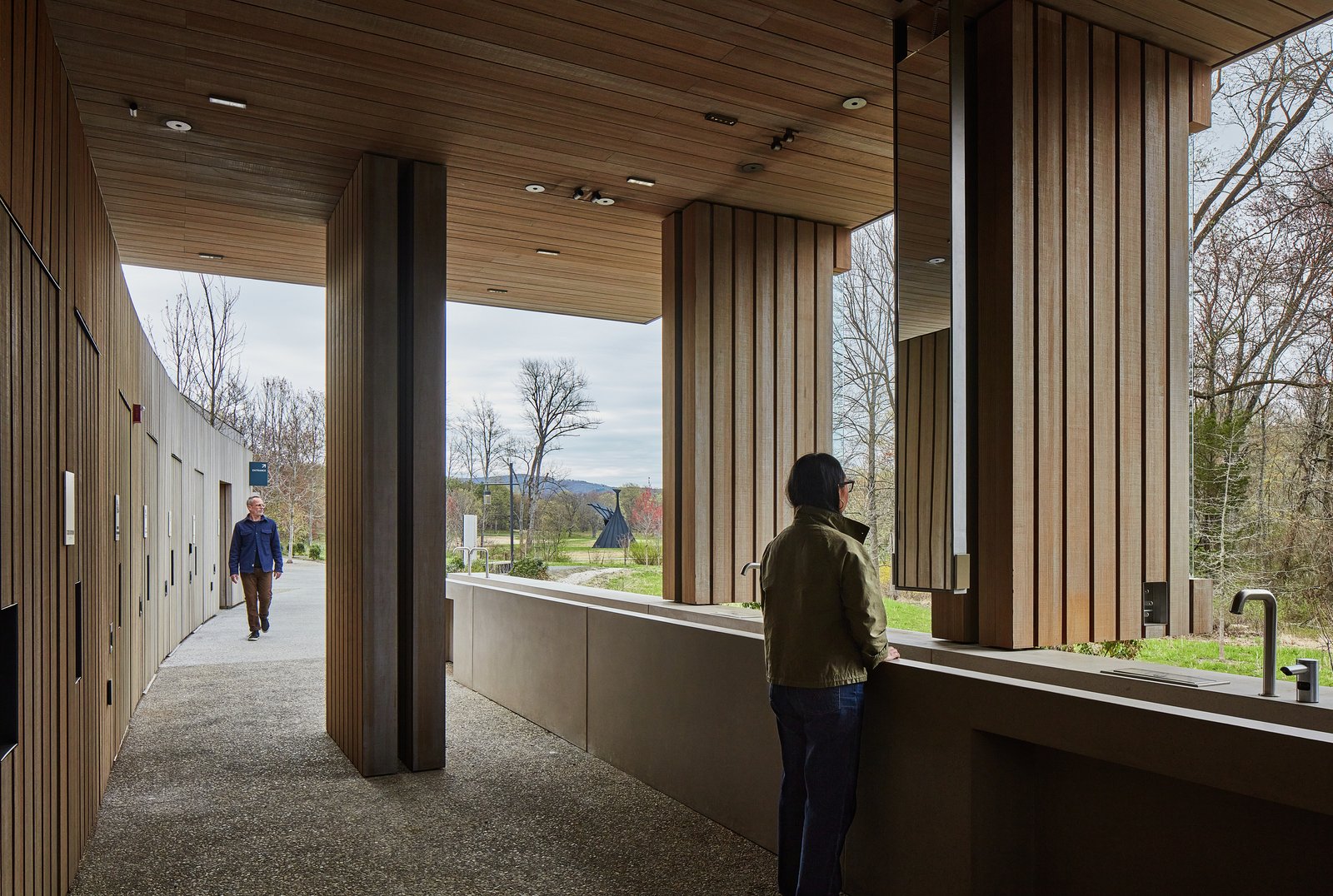
A view from the Restroom Pavilion’s open-air handwashing basin into the Outdoor Lobby and the grounds beyond. Artwork: Alexander Calder, The Arch, 1975 © Calder Foundation, New York/Artists Rights Society (ARS), New York. Photo credit: Richard Barnes
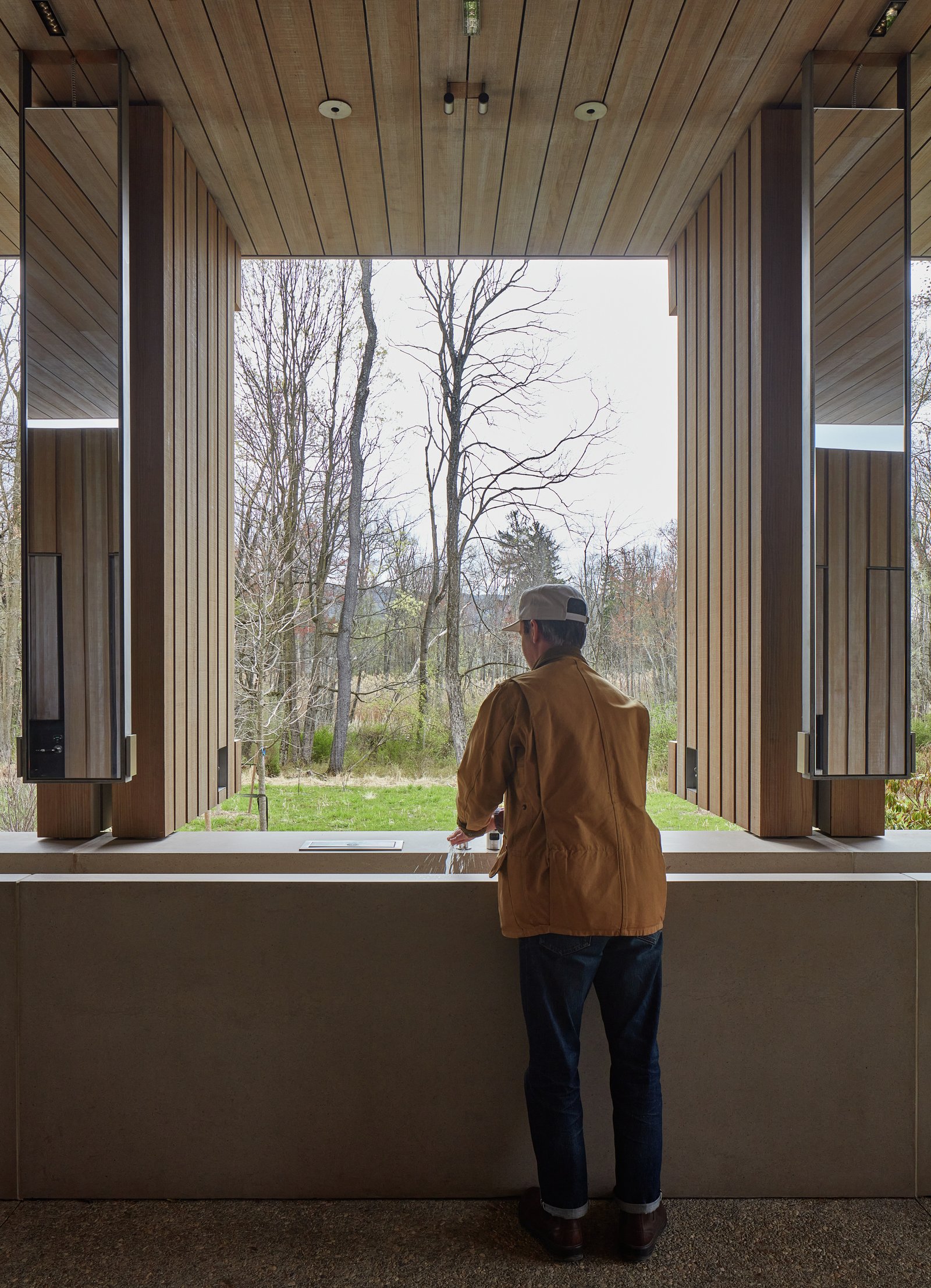
A view from the Restroom Pavilion’s open-air handwashing basin out to a restored wetland area. Photo credit: Richard Barnes
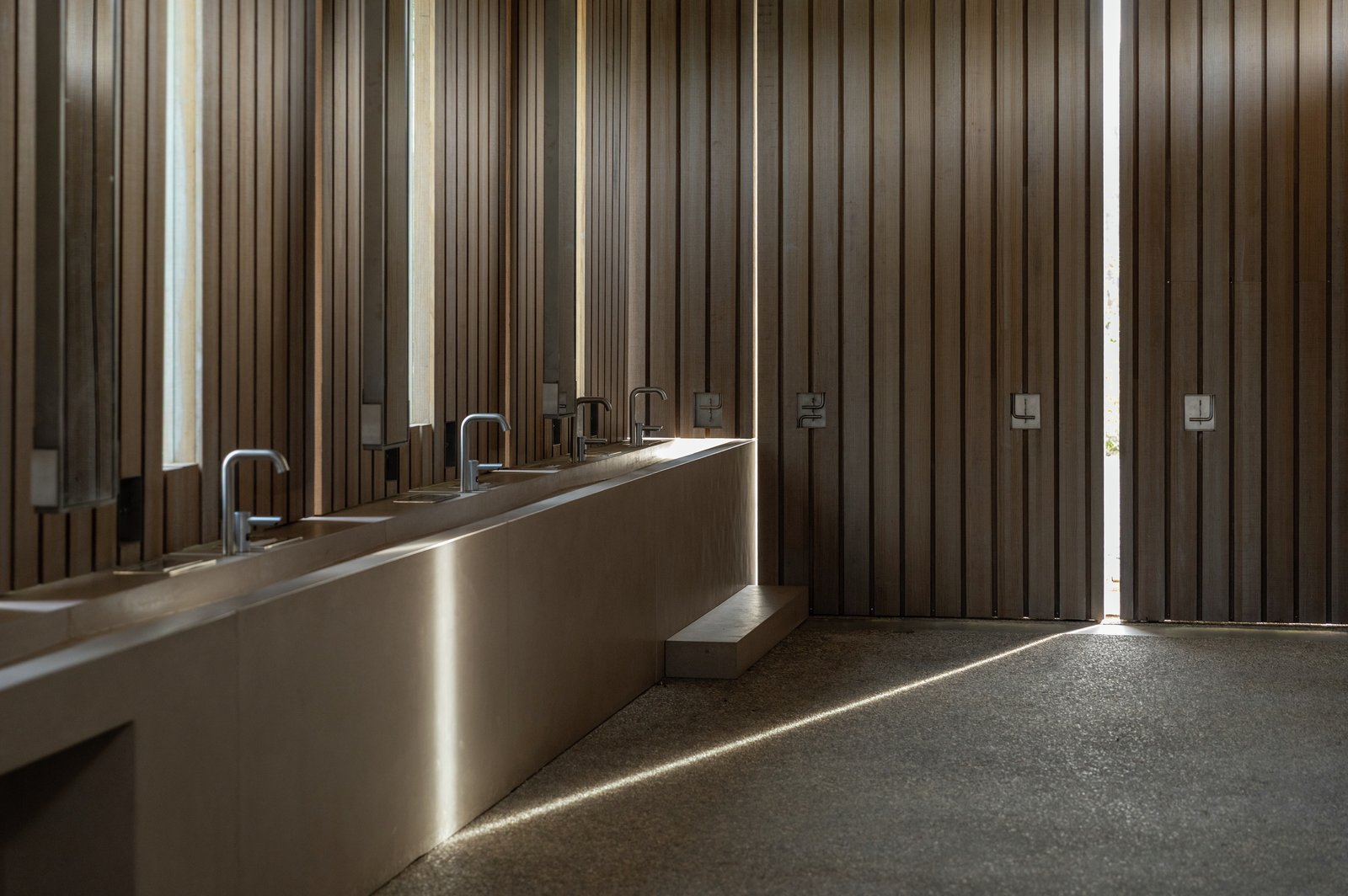
Restroom Pavilion interior with the handwashing basin shutters fully closed. Photo credit: Nicholas Venezia
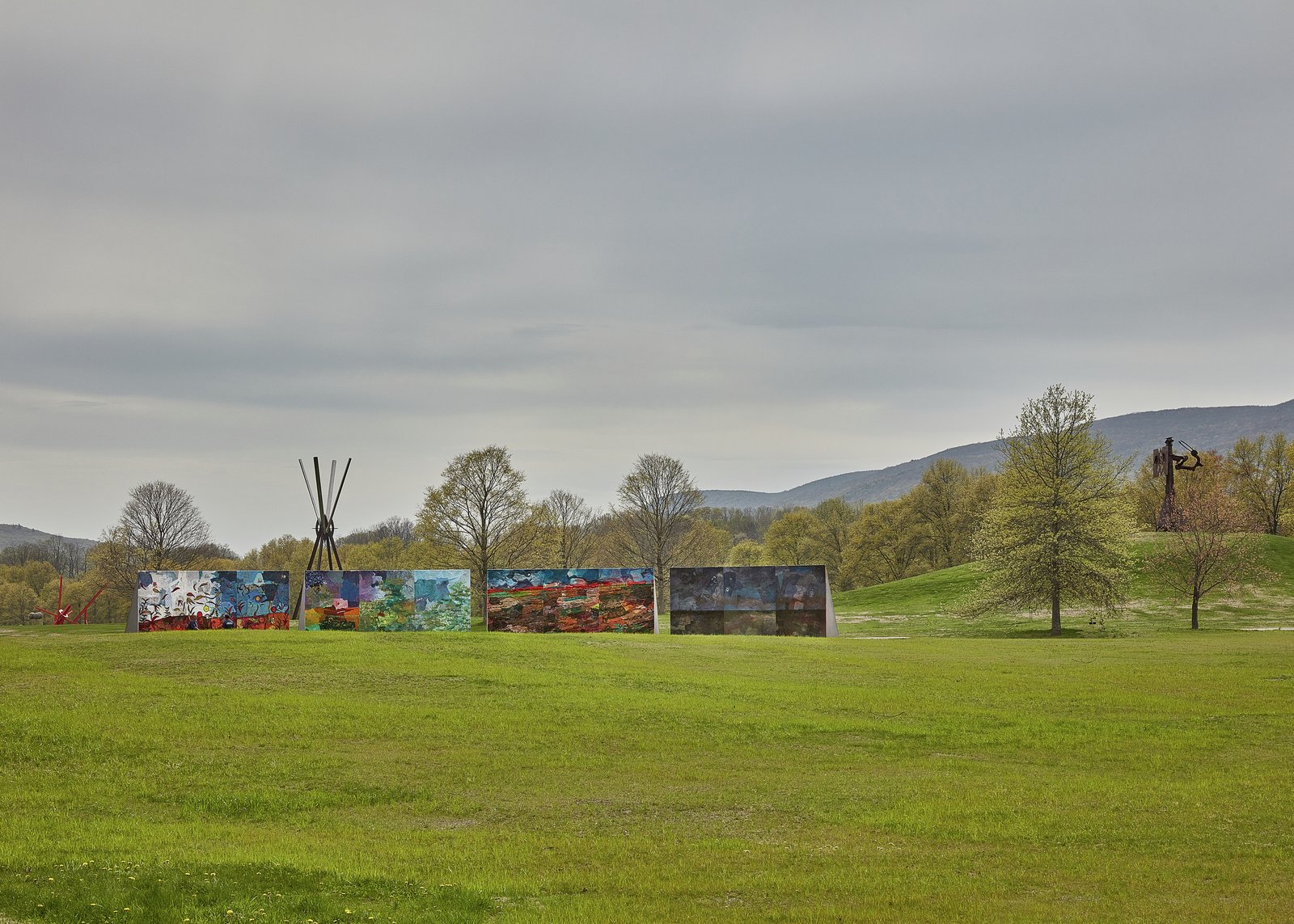
View of Tippet’s Field, a new landscape for art and programming reclaimed from a former parking lot. Artworks, left to right: Kevin Beasley, PROSCENIUM| Rebirth / Growth: The Watch / Harvest / Dormancy: On Reflection, 2024–25. Mark di Suvero, E=MC2, 1996-97. Mark di Suvero, Frog Legs, 2002. Photo credit: Richard Barnes
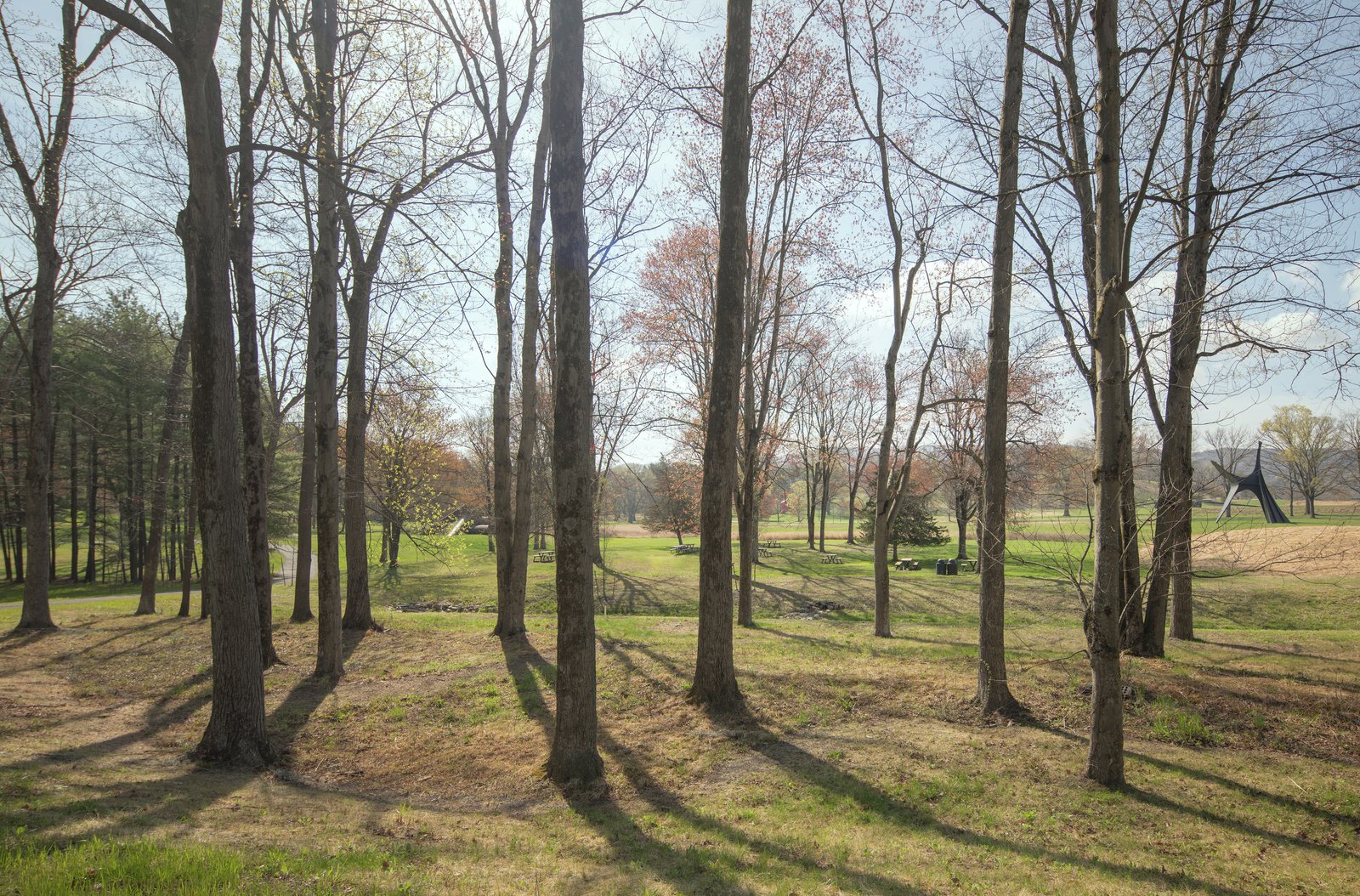
View of North Meadow, a new landscape reclaimed from a former parking lot. Artwork: Alexander Calder, The Arch, 1975 © Calder Foundation, New York/Artists Rights Society (ARS), New York. Photo credit: Nicholas Venezia
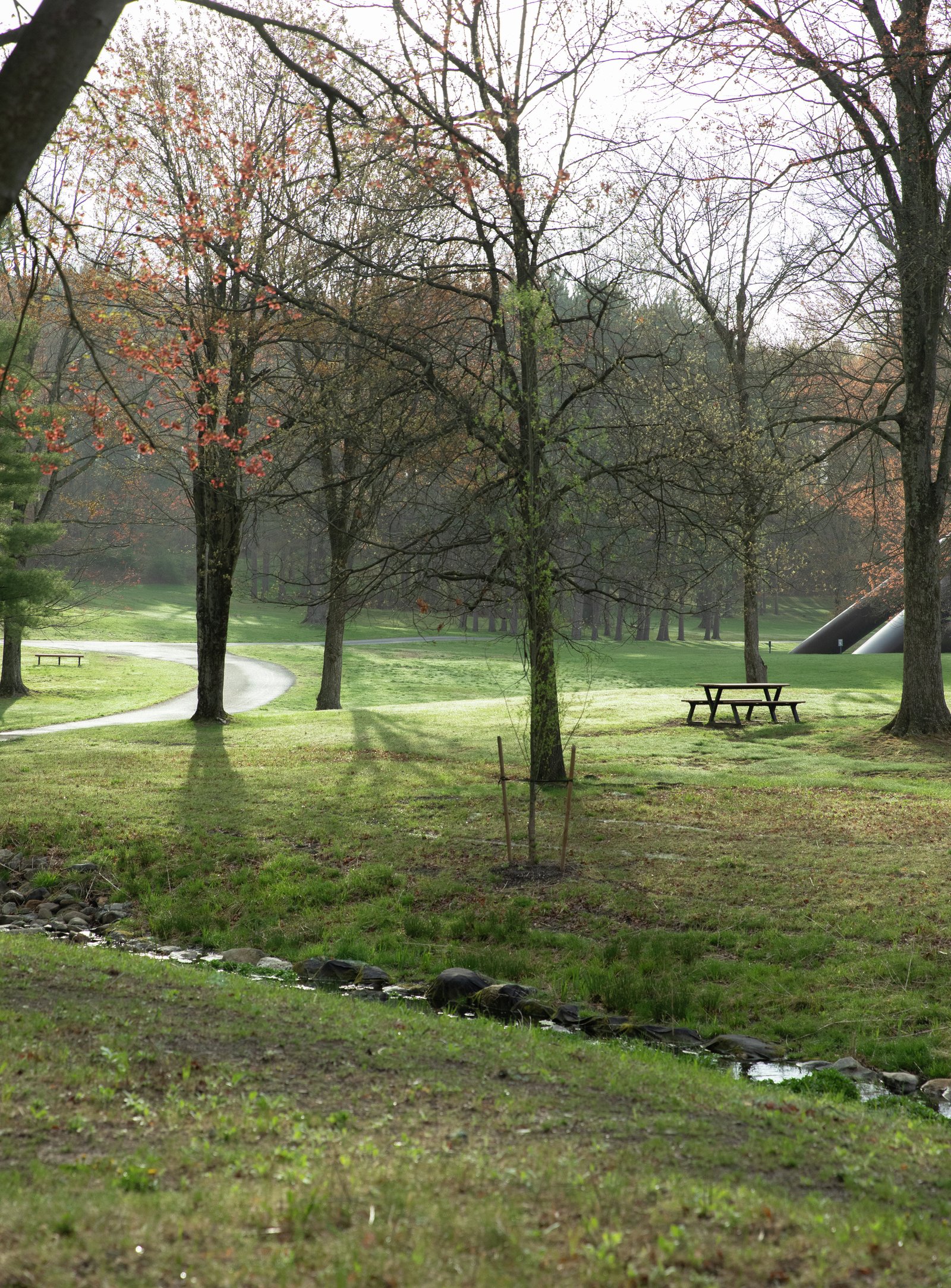
The newly daylit stream in the North Meadow. Photo credit: Nicholas Venezia
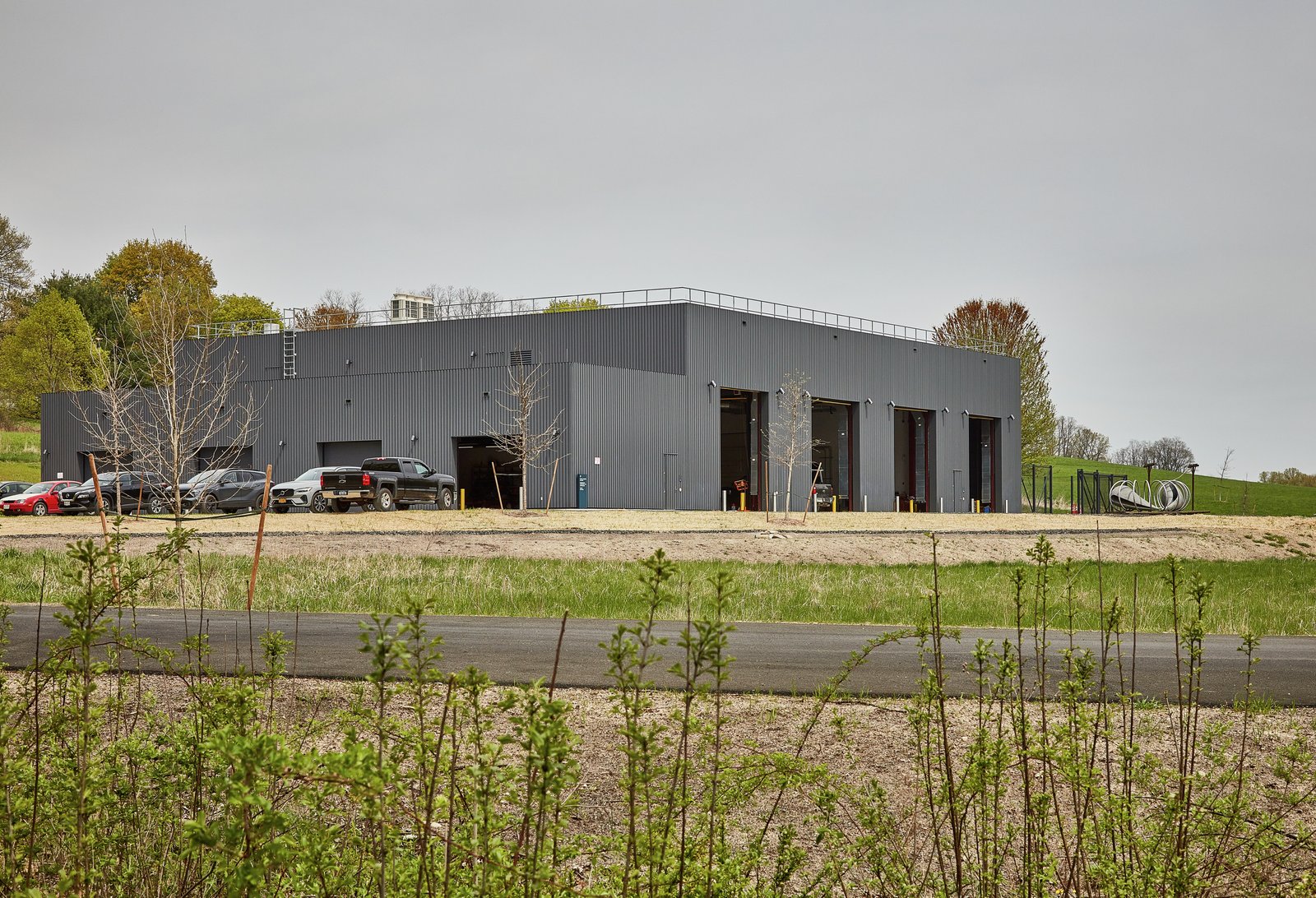
The David R. Collens Building for Conservation, Fabrication, and Maintenance at Storm King Art Center. Photo credit: Richard Barnes
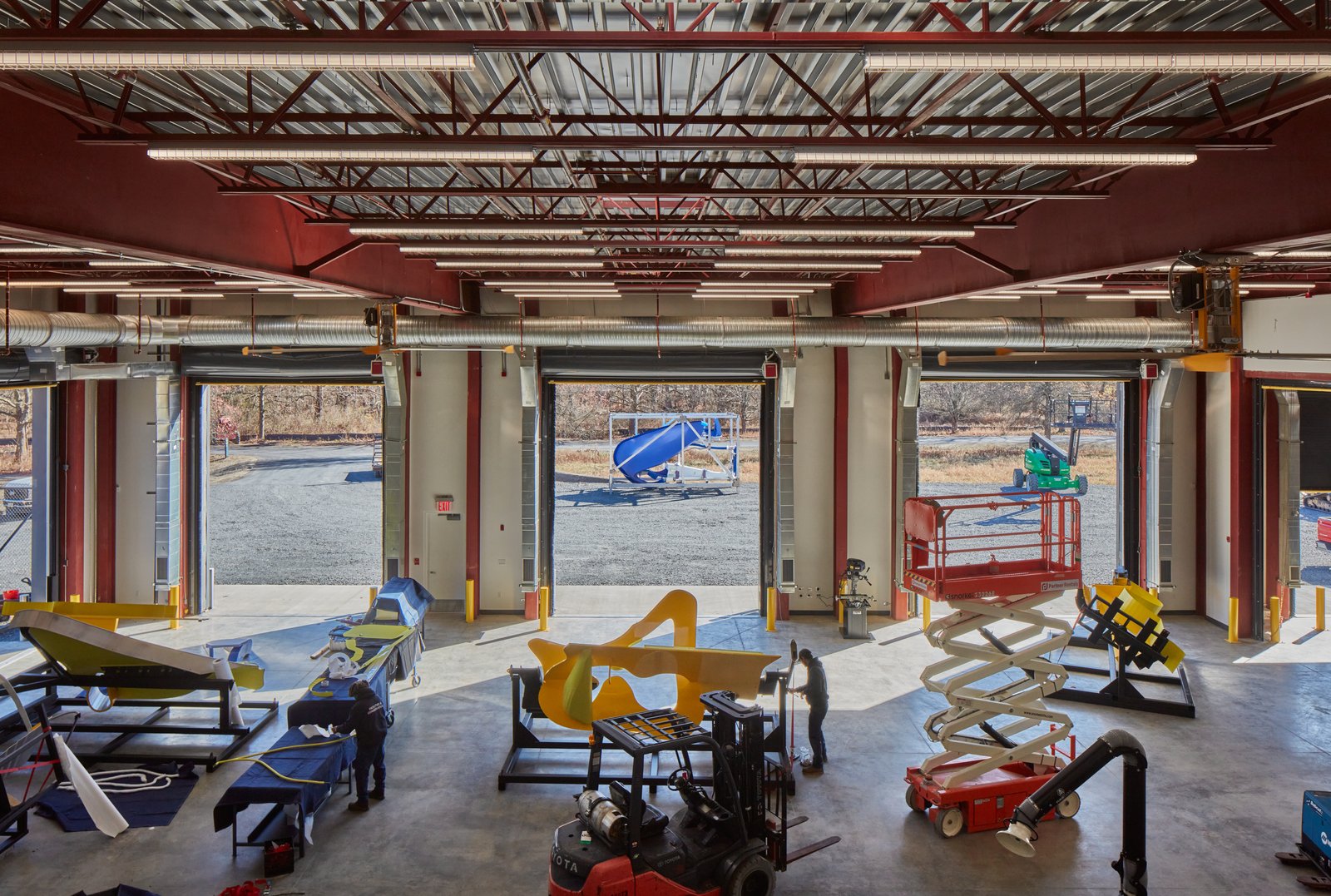
The main open workspace in the David R. Collens Building for Conservation, Fabrication. Photo credit: Richard Barnes
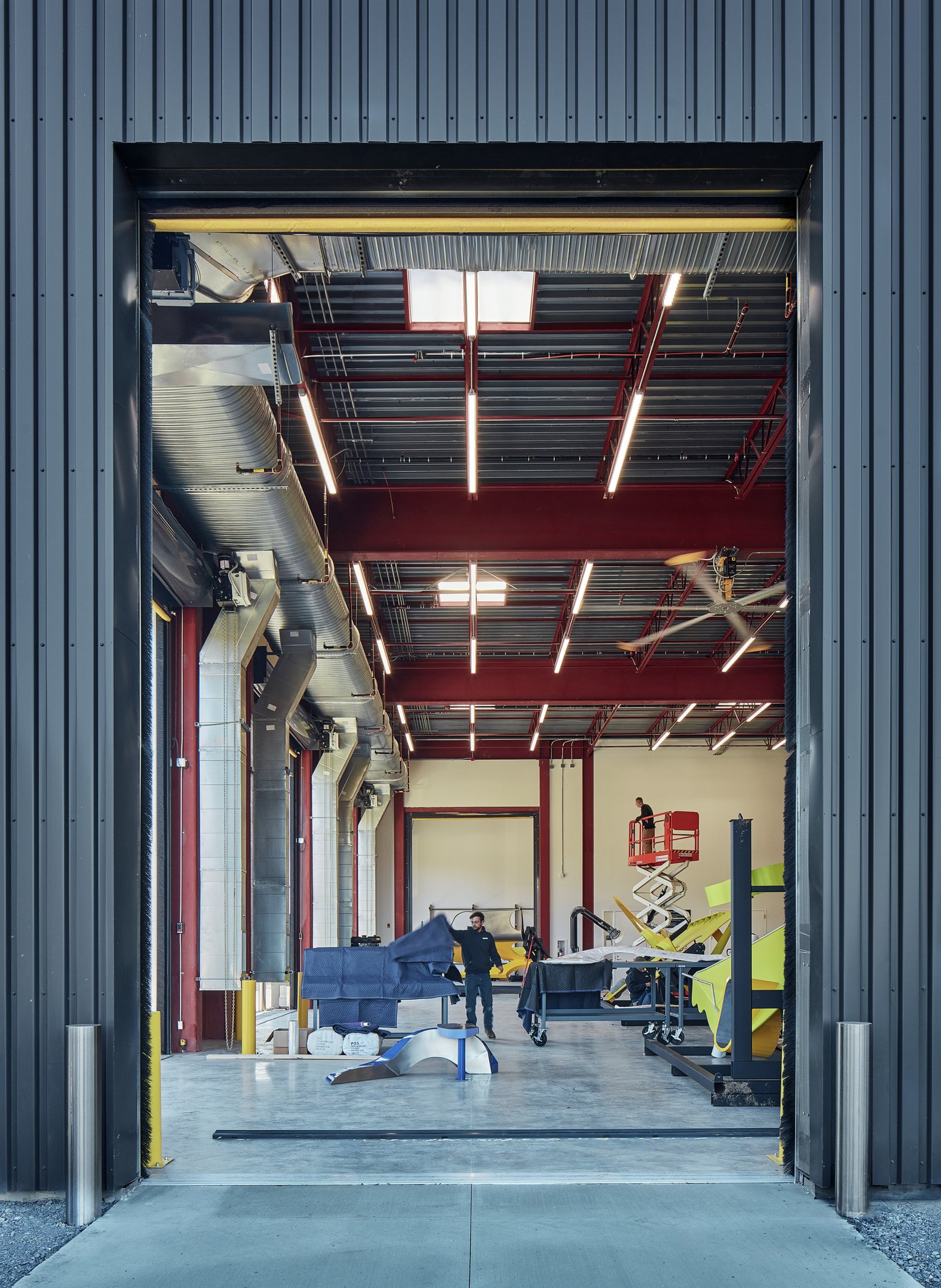
View into the main workspace of the David R. Collens Building for Conservation, Fabrication, and Maintenance at Storm King Art Center. Photo credit: Richard Barnes
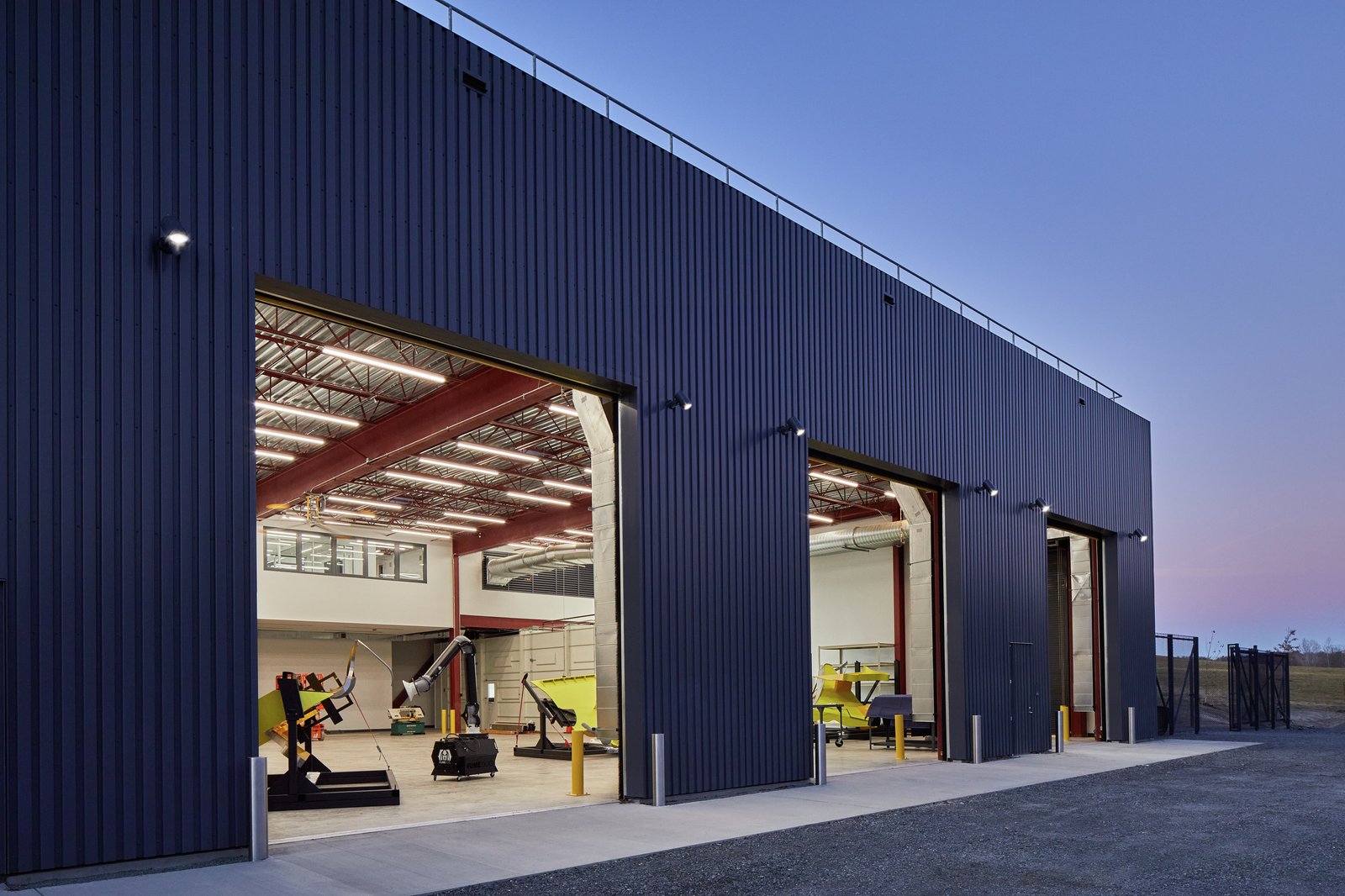
View into the main workspace of the David R. Collens Building for Conservation, Fabrication, and Maintenance at Storm King Art Center. Photo credit: Richard Barnes
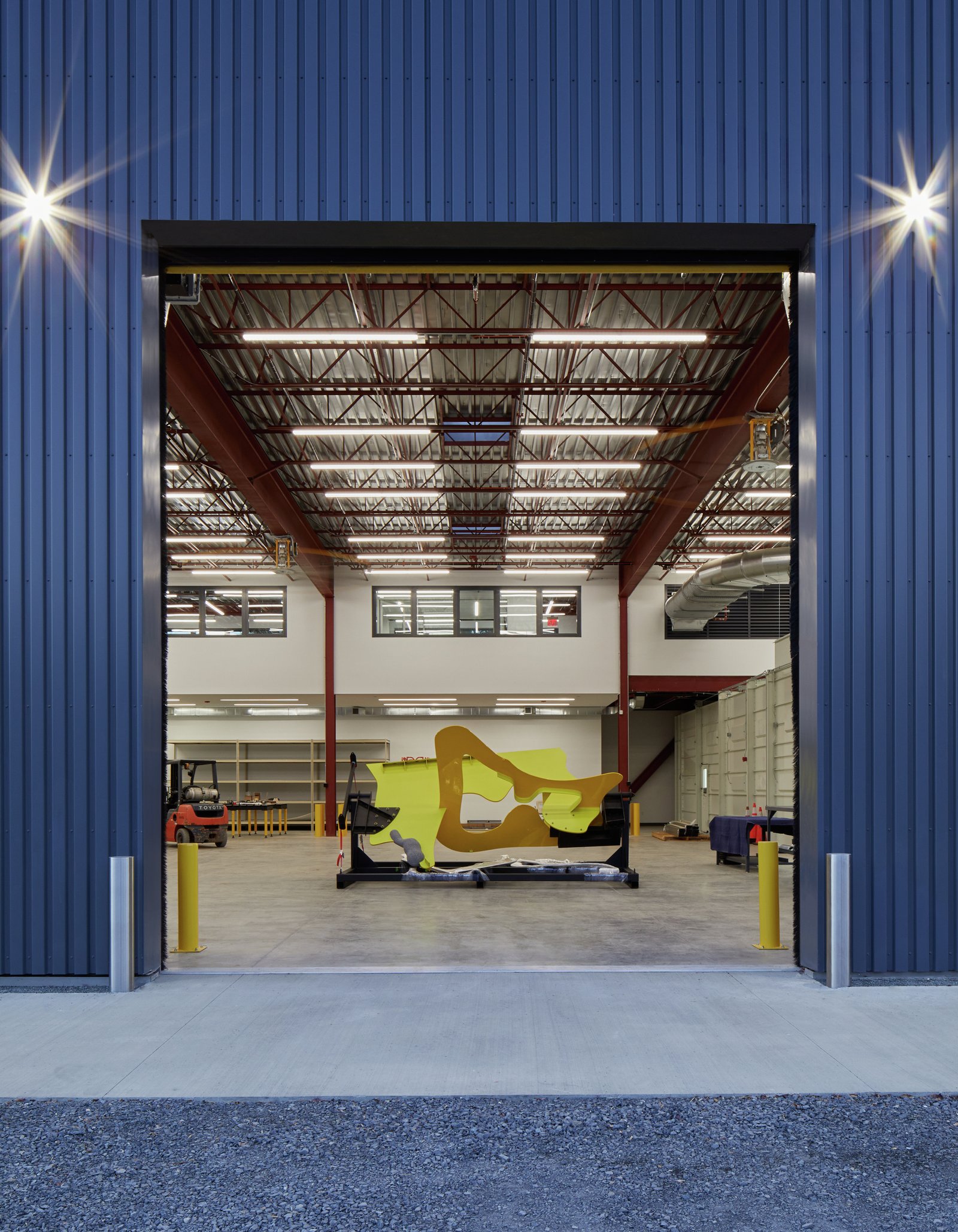
View into the main workspace of the David R. Collens Building for Conservation, Fabrication, and Maintenance at Storm King Art Center. Photo credit: Richard Barnes
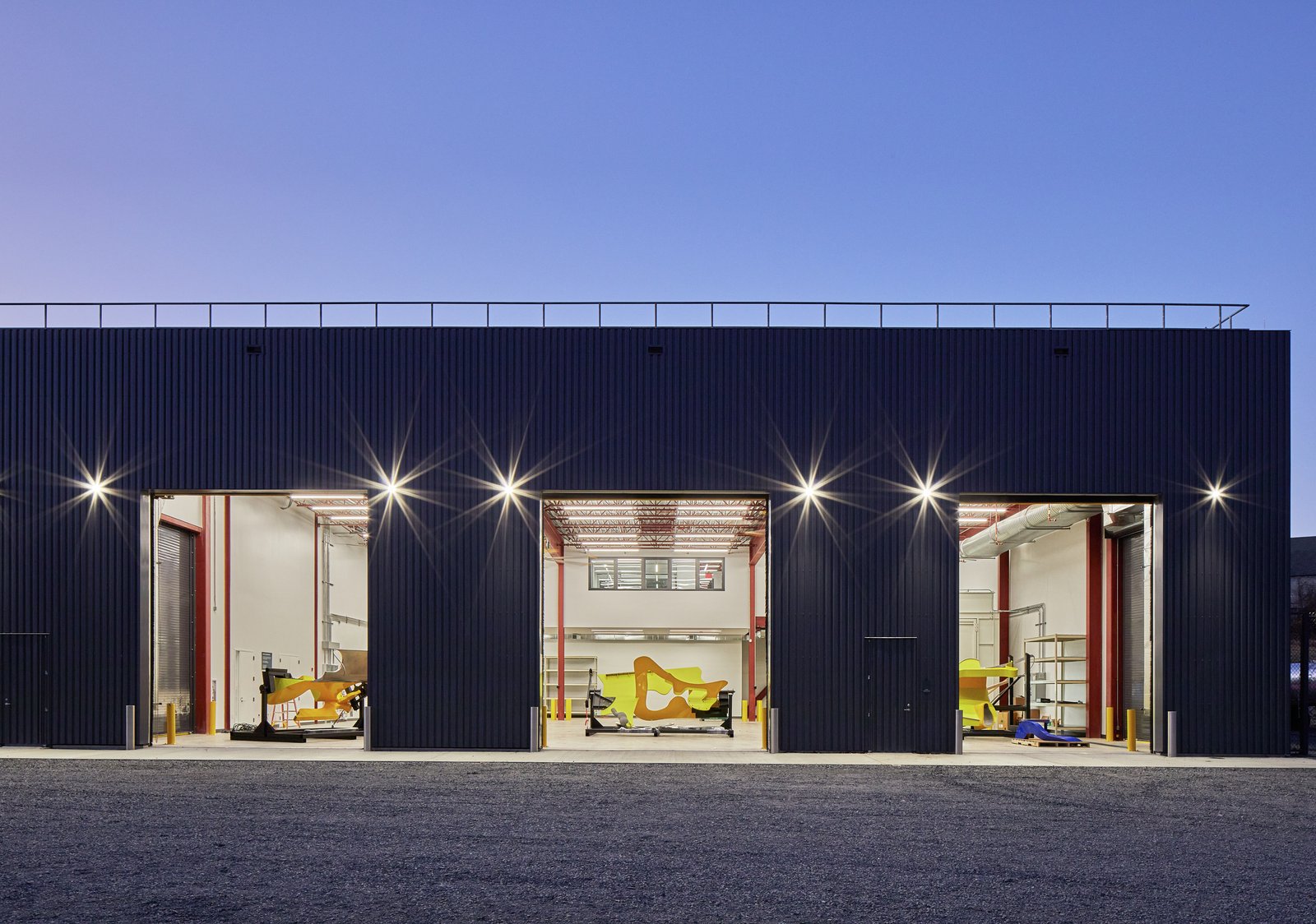
View into the main workspace of the David R. Collens Building for Conservation, Fabrication, and Maintenance at Storm King Art Center. Photo credit: Richard Barnes
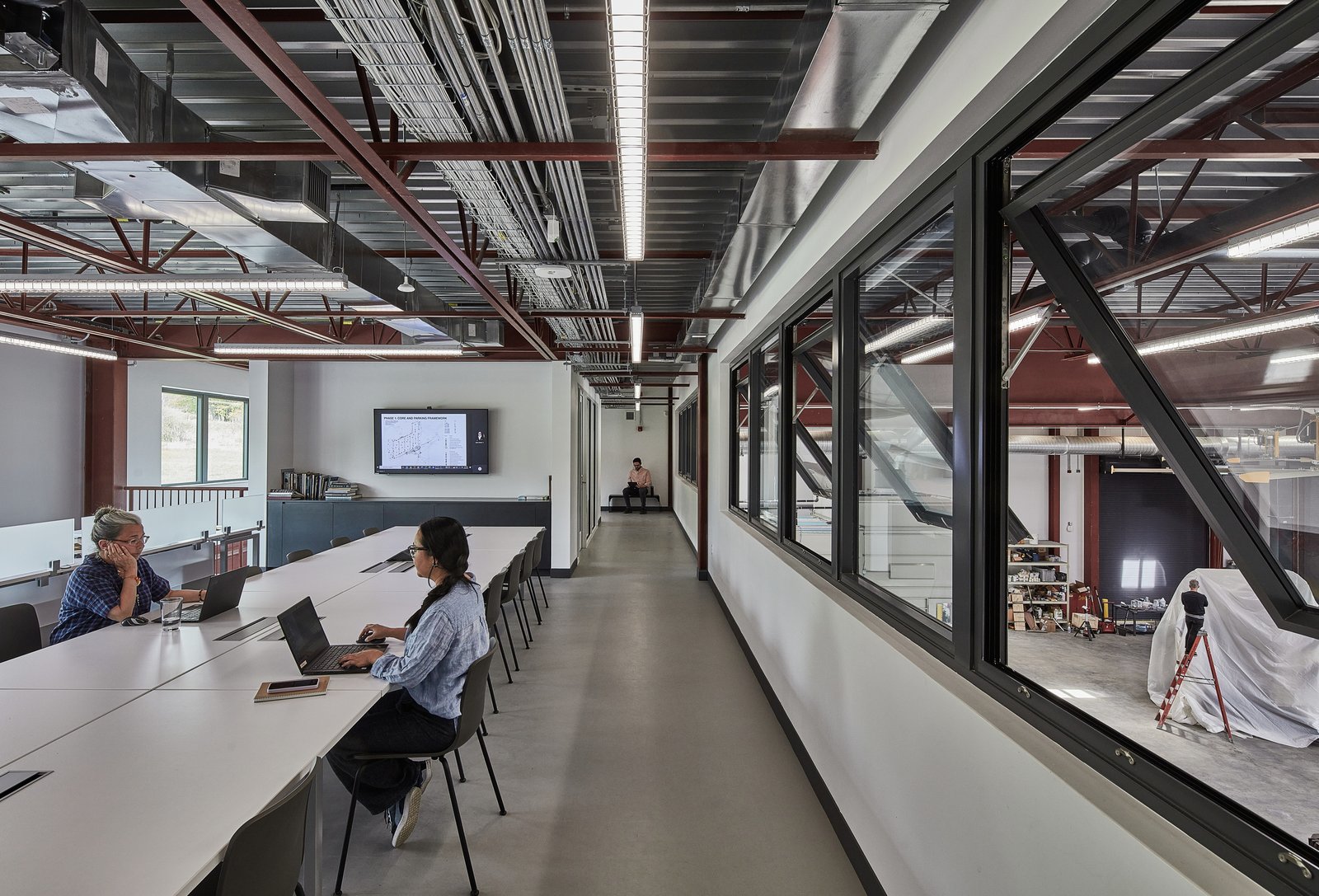
The mezzanine-level open office overlooking the main workspace in the David R Collens Building. Photo credit: Richard Barnes
Keywords
- Play
- Culture
- Community
- Accessibility
- Recreation
- Education
Collaborators
- BuroHappold
- Arup
- Reed+Hilderbrand
- VHB